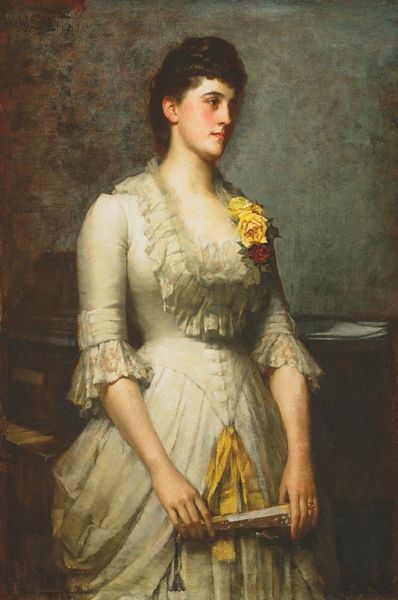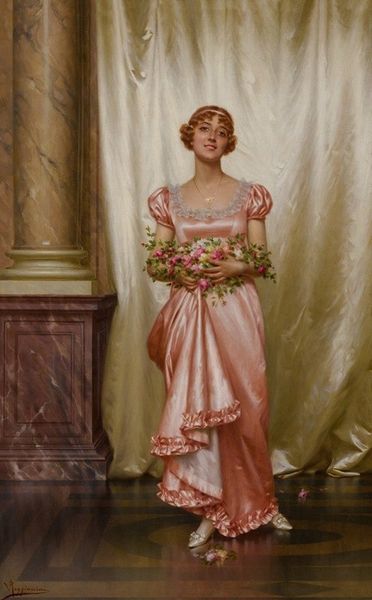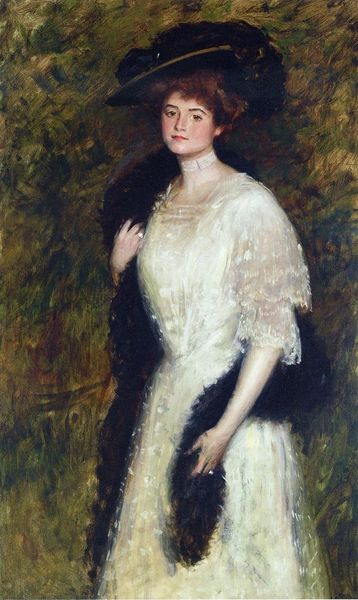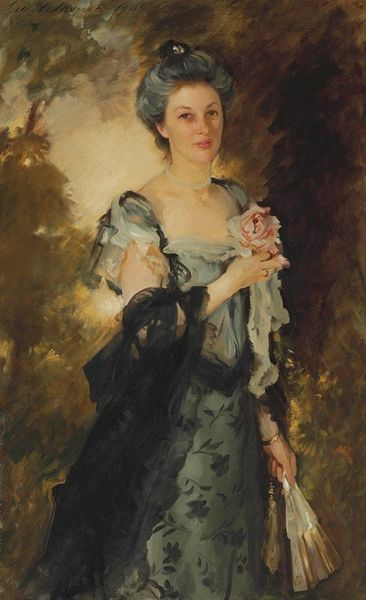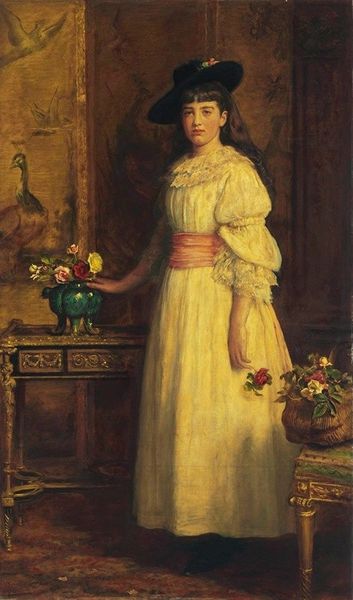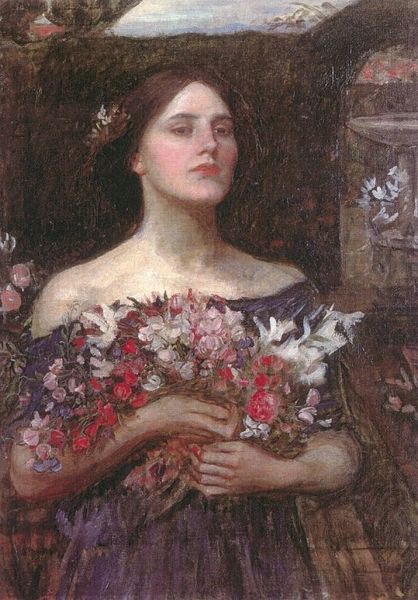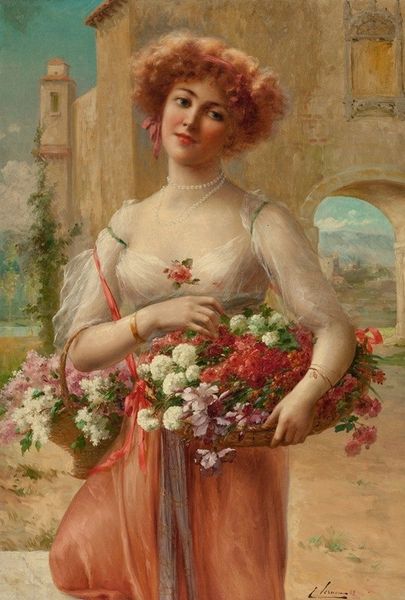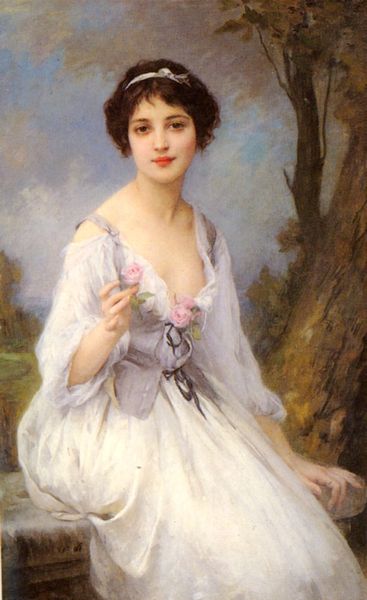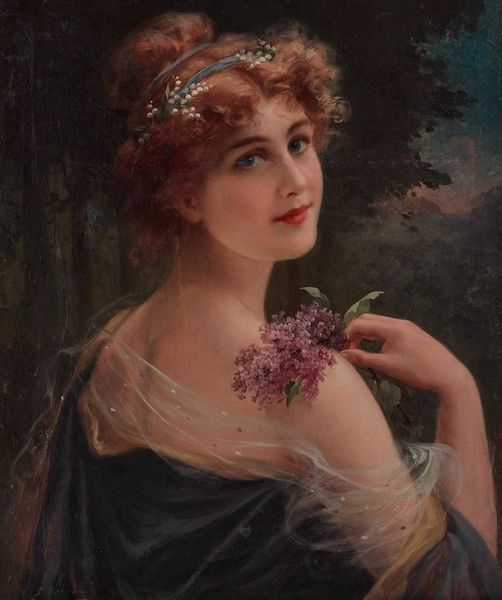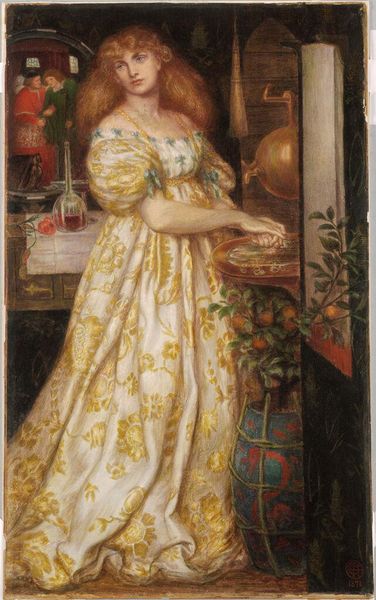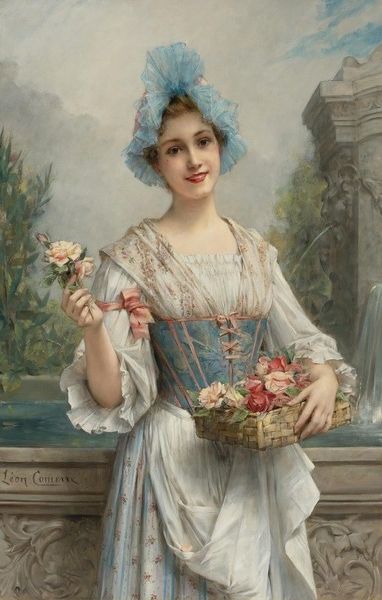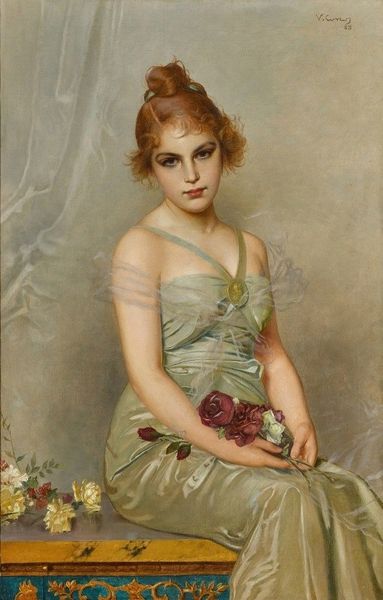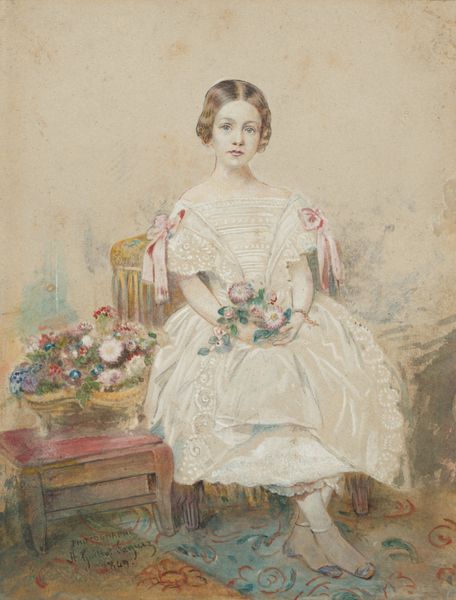
oil-paint
#
portrait
#
figurative
#
oil-paint
#
oil painting
#
romanticism
#
genre-painting
#
portrait art
Copyright: Public Domain: Artvee
Editor: Let's take a look at Eduard Veith's "Porträt Annie Sussanka," painted in 1813. There's something so serene about this portrait. The way she’s holding that basket of flowers seems almost staged, and her gaze is very direct. How do you read this piece? Curator: It's fascinating to consider this portrait within its socio-historical context. Think about 1813 – Europe was in the throes of the Napoleonic Wars. Romanticism flourished as a reaction against Enlightenment rationalism, with its emphasis on emotion and the individual. Does Annie, as depicted here, represent an ideal of femininity that was being promoted at the time? What messages were these images of women expected to convey to society? Editor: I hadn’t thought of it like that, but you’re right, there’s a kind of "ideal woman" quality here. A woman who is delicate, serene. It’s definitely idealized. Curator: Exactly. And who was commissioning these portraits, and why? Was it for private enjoyment, or did they have a more public function, shaping perceptions of women and their role? Notice how she interacts with the roses; Roses held a certain amount of societal import. It invites consideration of what meaning Veith attributes through these roses. Editor: It's like she is presenting these flowers as something worthy. And as she presents the flowers, she presents herself to the viewer. So interesting to see this as not just a simple image but part of a larger cultural dialogue. Curator: Precisely. Examining the art market, the patronage system, and the broader visual culture helps us understand the painting's purpose. It becomes a document reflecting social norms and aspirations. How the individual participates in constructing the collective experience, through shared symbolic objects, is of key interest. Editor: I'll definitely consider the historical setting and the role of these portraits within it next time. It gives the image a much richer depth. Thanks! Curator: My pleasure! Considering these aspects enhances our understanding of its significance, then and now.
Comments
No comments
Be the first to comment and join the conversation on the ultimate creative platform.
